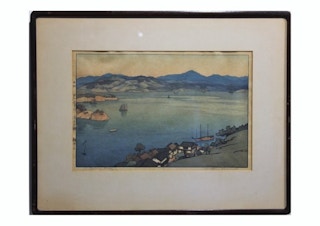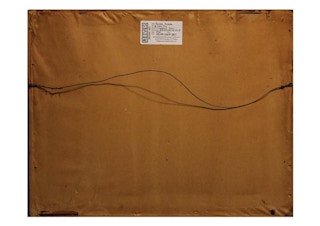Material
Woodblock Print
About
Beautiful Japanese woodblock print of a small village on the edge of a peaceful lake in the mountains by the artist Hiroshi Yoshida in 1930. Signed and dated along bottom edge. Hung in a brown wooden frame.
Artist Biography
A Japanese landscape painter and printmaker, especially known for woodcuts, Hiroshi Yoshida was born in 1867 in Kyusha or Kurema, Japan, and was much influenced by his adoptive father who was a painting teacher in the public schools. At age 19, he began art study in Kyoto with Tamura Skoryu, who did western style painting, which was becoming increasingly accepted in Japan. For three years Yoshida studied in Tokyo with Soyama Shotaro. In 1899, he received his first recognition in America with an exhibition of his work at the Detroit Museum, later renamed the Detroit Institute of Art. During that period he traveled on the East Coast of the USA and in Europe. By the 1920s, in addition to oil and watercolor landscape painting, he was heavily involved in woodblock printmaking. Hiroshi Yoshida was a leading figure in the 'shin hanga' (or new print) movement. He worked primarily as a painter until his late forties when he became fascinated with woodblock printing. After working with the Watanabe print shop for several years, Yoshida decided to fund his own workshop. Unlike ukiyo-e artists, he was intimately involved in all parts of the printmaking process. He designed the key blocks, chose the colors for the prints, and supervised the printers. In some cases, he even helped to carve the printing blocks. This was unusual, considering the traditional division of labor between designer, carver, and printer at that time. Yoshida passed away in 1950.
Dimensions
H 17.75 in. x W 22.25 in. x D .5 in.

